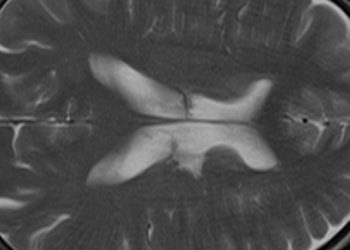HPV vaccine associated with minimal adverse effects
Image: CC/VNU CNS
Key study points:
1. The quadrivalent HPV vaccine is associated with an increased risk of same-day syncope and injection site reactions in the post-vaccination period compared to a control period more remote in time from the vaccination.
2. No new major safety risks were identified for the quadrivalent HPV vaccine.
Primer: Approximately 70% of cervical, vaginal and anal cancers are caused by HPV (Human Papillomavirus) genotypes 16 and 18. HPV genotypes 6 and 11 are major causes of genital warts. The quadrivalent HPV vaccine (brand-name: Gardasil) targets HPV genotypes 6, 11, 16 and 18. The vaccine was approved by the FDA in June 2006 for females 9 to 26 years of age. The vaccine is supposed to be administered in three doses: time 0, 2 months and 6 months.
The FUTURE I and II phase 3 trials demonstrated that the vaccine was effective and that it was most effective in HPV-naïve females. Guidelines recommend routine vaccination of girls as early as 9 years of age. Some groups also recommend catch-up vaccinations for women aged 13 to 26 years, but this has been challenged on grounds of cost-effectiveness.
Post-licensure surveillance done by the CDC has not found a higher rate of adverse events compared to other vaccines, except for disproportional reporting of syncope and venous thromboembolism (VTE). Most of the patients with VTE had known risk factors such as smoking, OCP use or clotting disorders. The most commonly reported adverse events are syncope, followed by pain and redness at the injection site.
Background reading:
This [retrospective, observational cohort] study was conducted within the Kaiser Permanente systems of Northern and Southern California. The cohort consisted of 189,629 females between 9 and 26 years of age who had received at least one dose of the quadrivalent vaccine. A subset of 44,001 individuals in the cohort received all 3 doses of the vaccine.
Safety of the vaccine was assessed by comparing the odds of post-vaccination emergency department visits and hospitalizations within a short period after the vaccination to the odds of ED visits and hospitalizations in a period more remote from the vaccination. Adverse events were classified using ICD-9 codes.
An association was found between the vaccine and syncope on the day of the injection (OR 6.0; 95% CI, 3.9 – 9.2). There was also an association with skin infections in the 2 weeks after vaccination (OR 1.8; 95% CI, 1.3 – 2.4), though medical record review suggested that these might have been local injection site reactions. No association was found between HPV vaccination and VTE.
In sum: This study, undertaken as a post-licensure commitment to the FDA and the European Medicines Agency, finds no new major safety concerns related to the quadrivalent HPV vaccine.
One of this study’s strengths is its large cohort. However, the study was not designed to detect adverse events beyond 60 to 180 days of vaccination. The study also would not have detected adverse events that were not severe enough to warrant an ED visit or hospitalization. Finally, medical record validation was only performed for select diagnoses.
Click to read the study in the Archives of Pediatrics & Adolescent Medicine
By TJ and MP
© 2012 2minutemedicine.com. All rights reserved. No works may be reproduced without written consent from 2minutemedicine.com. DISCALIMER: Posts are not medical advice and are not intended as such. Please see a healthcare professional if you seek medical advice.




